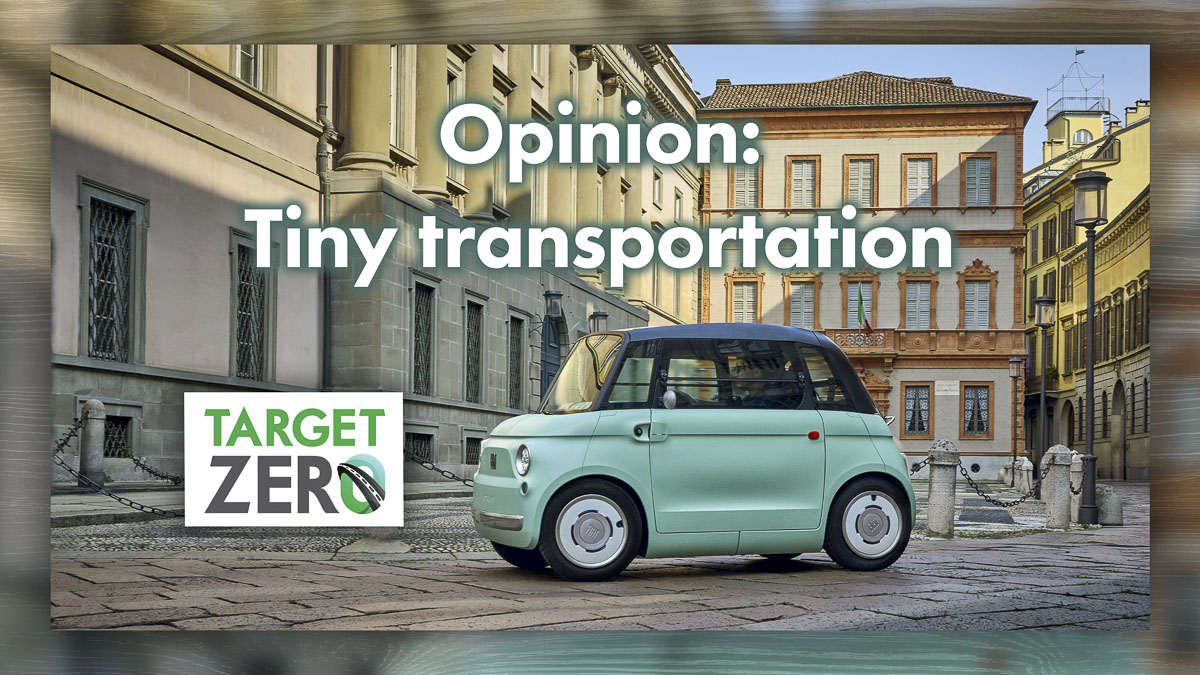
Target Zero Manager Doug Dahl answers a question about tiny car-like vehicles called quadricycles
Doug Dahl
The Wise Drive
Q: I’ve seen some tiny car-like vehicles available in Europe (from Citroen and Fiat, for example), called quadricycles. Any chance we’ll see those in the US any time soon? Are they street-legal here?
A: I don’t know how interested a car manufacturer like Fiat or Citroen is in importing their tiny quadricycles into a market that’s obsessed with giant SUVs and pickups, even if they could. But in Washington you’d be allowed to drive one on the road, with limitations, if you could get one (and that’s the tricky part).

For anyone unfamiliar with the modern quadricycle, do an image search for the new Fiat Topolino and tell me it’s not the cutest thing you’ve ever seen with a steering wheel. It would be nearly impossible to drive it in a bad mood. However, if you currently drive a Suburban because you think you need it for protection, there’s probably no way you’d ever get in that Fiat.
To answer the street-legal question we need some background. In 1998 the National Highway Traffic Safety Administration (NHTSA) created a vehicle class called “Low Speed Vehicle” (LSV). These are small car-like vehicles with a maximum speed of 25 mph. The intention was to allow these vehicles primarily in “self-contained communities” like retirement villages. Given the anticipated use of LSVs, NHTSA didn’t require the same safety standards of typical passenger cars.
In 2003 Washington approved the use of Neighborhood Electric Vehicles (NEVs) on roads with speed limits of 35 mph or less (along with a few other restrictions.) NEVs are similar to LSVs, except that NEVs, as the name implies, are always electric, while LSVs don’t have a defined power source.
In 2007 Washington added the Medium-speed Electric Vehicle (MEV) to the mix (as have several other states). An MEV is basically an NEV with a top speed of 35 mph instead of 25 mph, and the rules on where they can be driven are identical. But here’s the problem: NHTSA requires any car with a maximum speed above 25 mph to meet all the federal safety standards, while Washington requires MEVs to meet the same minimal standards as an NEV.
Since vehicle manufacturers can’t import or sell vehicles that don’t meet federal standards, you could drive an MEV in Washington, but a vehicle company can’t sell you one. Both the Citroen and the Fiat have a top speed of 28 mph (or 45 kph), the maximum for the category in many European countries, bumping it up to an MEV.
But rather than bore you with minutia about bureaucratic standards, let’s consider whether it’s even a good idea to drive one of these on our roads. Your answer probably depends on how you’re currently getting around.
No doubt there’s an economic advantage to a quadricycle. They’re cheap to buy, and pocket change to drive. But they don’t provide the protection of a modern car. Our traffic fatality rate today is far lower than it was in 1969, and much of that is due to safety improvements in vehicle design. (And some recent increases in traffic fatalities can be blamed on vehicle design – tall trucks and SUVs are killing more pedestrians.) Drive an MEV and you’re giving up much of the safety engineering of the past several decades. But if your usual mode of transportation is a bike or motorcycle, an MEV might feel like a protection upgrade.
Of course, so much of the driving risk comes from our own choices. In some circumstances (slow speeds), for some people (safe drivers), an MEV might be the right option. If you can ever get one.

The Wise Drive is hosted by Doug Dahl, a Target Zero manager for the Washington Traffic Safety Commission.
Also read:
- Opinion: Washington state paid $8.6 million a year in unnecessary Medicaid premiumsWashington state’s Medicaid program wastes $8.6M annually on duplicate premiums; reforms are needed.
- Opinion: Extending the Yellow MAX Line to Vancouver Is TriMet’s worst idea yetJohn A. Charles Jr. critiques the Yellow MAX Line extension, urging legislators to remove light rail from the project.
- Opinion: Courts blocking the Kroger-Albertson merger won’t stop consumers from making choicesPaul Guppy of Washington Policy Center critiques judicial rulings that block the Kroger-Albertsons merger, citing changing consumer trends and potential job losses.
- Opinion: Workers need money — and the many other gifts work can bringElizabeth New Hovde discusses the value of work, its benefits for workers and employers, and its impact on personal growth.
- How Should Washington Taxpayers Handle TriMet’s Proposed Light Rail Costs? Share Your Thoughts!C-TRAN Board reviews TriMet’s proposal for Washington taxpayers to fund 45% of light rail operating costs, sparking local debate.










